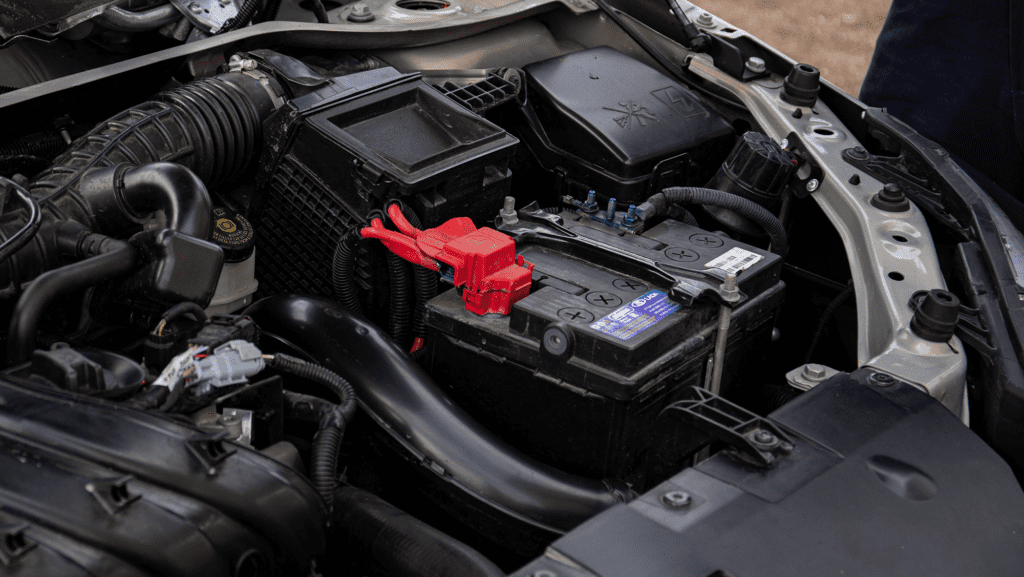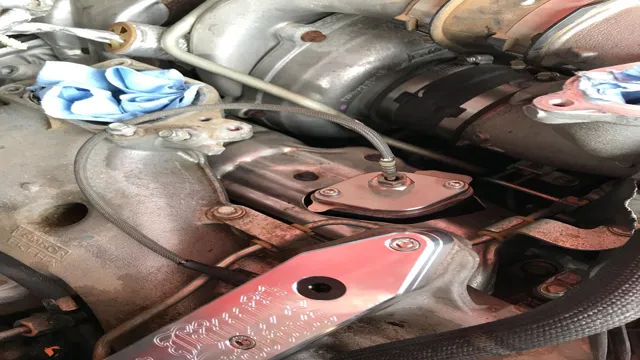Fuel Pump Float Replacement : Ultimate Guide
To replace a fuel pump float, disconnect the negative terminal of the battery, disconnect and remove the fuel lines, remove the old fuel sensor, and reinstall the new float arm onto the fuel pump. If you’re experiencing issues with your fuel gauge or suspect a faulty fuel sending unit, it may be time to replace the fuel pump float.
Symptoms of a bad fuel sending unit include the fuel gauge reading empty when the tank is full, the gauge being stuck on full, or the gauge fluctuating between empty and full. Driving with a malfunctioning fuel sender unit can be dangerous and leave you stranded.
Replacing the fuel pump float is a crucial step in ensuring the accuracy of your fuel gauge and the proper functioning of your vehicle.
Understanding Fuel Pump Float Replacement
When addressing fuel pump float replacement, it’s essential to understand the symptoms of a faulty fuel sending unit. If the fuel gauge reads inaccurately or fluctuates between empty and full, it may be time to replace the float. Driving with a malfunctioning fuel sender unit can be unsafe and lead to being stranded.
Symptoms Of A Bad Fuel Sending Unit
When the fuel sending unit in your vehicle starts to malfunction, there are several common symptoms that you may notice:
- Fuel gauge reading empty when the tank is full
- Fuel gauge is stuck on full
- Fuel gauge fluctuates between empty and full
These symptoms indicate that there may be an issue with the fuel sending unit, and it’s important to address it promptly to avoid any further problems.
Cost Of Replacing A Gas Floater
The cost of replacing a fuel pump float, also known as a gas floater, can vary depending on several factors:
- The make and model of your vehicle
- The brand and quality of the replacement part
- Whether you choose to DIY or hire a professional
On average, you can expect to pay anywhere from $10 to $150 for a new fuel pump float. Keep in mind that this cost does not include any additional labor charges if you decide to have a mechanic replace it for you.
Risk Of Driving With A Faulty Fuel Sending Unit
Driving with a faulty fuel sending unit can lead to various risks and inconveniences:
- Running out of fuel unexpectedly: If your fuel gauge is not accurately reading the amount of fuel in your tank, you may find yourself running out of gas without warning.
- Inaccurate fuel level readings: A faulty fuel sending unit can cause your fuel gauge to display incorrect readings, making it difficult to know how much fuel you have left.
- Potential damage to the fuel pump: In some cases, a malfunctioning fuel sending unit can put added strain on the fuel pump, potentially leading to premature wear and failure.
- Inconvenience and inconvenience: Dealing with a faulty fuel gauge can be frustrating and inconvenient, especially if you rely on your vehicle for daily commuting or long trips.
To avoid these risks, it’s important to address any issues with your fuel sending unit as soon as they arise. This can help ensure accurate fuel level readings and prevent any unexpected fuel-related problems while driving.

Credit: atlas-scientific.com
Function And Importance Of Fuel Pump Float
The fuel pump float is an essential component of the fuel system in any vehicle. It plays a crucial role in accurately measuring the amount of fuel in the tank and relaying that information to the fuel gauge. In this section, we will explore the function and importance of the fuel pump float.
How A Fuel Gauge Works
The fuel gauge in a car is responsible for indicating the level of fuel in the tank. It is connected to the fuel pump float, which moves up and down based on the amount of fuel present. The movement of the float is transmitted to the gauge through a series of electrical signals, displaying the fuel level on the dashboard.
Purpose Of A Fuel Tank Float
The fuel tank float serves a crucial purpose in the fuel system. Its main function is to accurately measure and monitor the fuel level in the tank. By maintaining a consistent and reliable reading, it ensures that the driver has an accurate estimation of how much fuel is remaining.
Without a properly functioning fuel pump float, the fuel gauge may show incorrect readings, leading to inaccurate fuel level readings. This can be inconvenient and potentially dangerous, as it may lead to unexpected fuel depletion while driving.
Moreover, a faulty fuel pump float can also cause other problems, such as fuel gauge fluctuation or getting stuck on full or empty. Therefore, it is essential to replace a damaged or malfunctioning fuel pump float to maintain the accuracy and reliability of the fuel gauge.
In conclusion, the fuel pump float plays a vital role in the fuel system by accurately measuring and monitoring the fuel level in the tank. It ensures that the fuel gauge provides a reliable reading, allowing the driver to make informed decisions regarding refueling. If you notice any issues with the fuel gauge or suspect a faulty fuel pump float, it is crucial to replace it promptly to avoid any further complications.
Replacing The Fuel Pump Float
Replacing the fuel pump float is a crucial maintenance task to ensure the accurate measurement of fuel levels in the tank. Over time, the float arm may become damaged or deteriorate, causing issues such as incorrect fuel level readings or fuel gauge malfunctions. Here, we will guide you through the process of replacing the fuel pump float to restore proper fuel level monitoring in your vehicle.
Disconnecting The Fuel Pump
To begin the replacement process, start by disconnecting the negative terminal connected to the battery. Following this, proceed to disconnect the fuel lines and remove the old fuel sensor from the fuel pump assembly.
Removing And Installing The New Float Arm
After disconnecting the fuel pump, carefully remove the float arm and inspect it for any signs of damage or wear. Once removed, assess the compatibility of the new float arm with your vehicle’s fuel pump assembly. Install the new float arm by securely connecting it to the fuel pump assembly, ensuring proper alignment and calibration for accurate fuel level readings.

Credit: heartautocare.com
Finding Replacement Fuel Pump Floats
Options From Different Suppliers
When searching for replacement fuel pump floats, there are various suppliers offering different options. Some popular suppliers include:
- Moss Motors – Offering gas tank unit floats at $8.99
- Summit Racing – Providing floats for $7.99
- Aircraft Spruce and Specialty – Rochester Replacement Fuel Float available for $3.70
- Advance Auto Parts – Tanks Replacement Fuel Sender Float Arm priced at $10.45
Cost Comparison Of Floats
Comparing the costs of fuel pump floats from different suppliers:
| Supplier | Float Price |
|---|---|
| Moss Motors | $8.99 |
| Summit Racing | $7.99 |
| Aircraft Spruce | $3.70 |
| Advance Auto Parts | $10.45 |
Alternatives For Fuel Gauge Sender Replacement
If you’re experiencing issues with your fuel gauge sender and need an alternative to fuel gauge sender replacement, consider replacing the fuel pump float. This can help fix problems such as an inaccurate fuel gauge reading, a gauge stuck on full, or fluctuation between empty and full.
Possibility Of Using Replacement Parts
Consider using cost-effective replacement parts for fuel gauge sender units.
Replacing the sender unit with compatible, affordable parts can ensure reliable performance.
Considerations For Replacing The Sender Unit
- Check the compatibility of replacement parts with your vehicle’s make and model.
- Ensure proper installation to avoid potential fuel gauge inaccuracies.
- Verify the quality and durability of the replacement sender unit for long-term reliability.
Consulting a professional may be beneficial for a seamless sender unit replacement process.

Credit: jacosuperiorproducts.com
Frequently Asked Questions On Fuel Pump Float Replacement
What Are The Symptoms Of A Bad Fuel Sending Unit?
Symptoms of a bad fuel sending unit include fuel gauge reading empty when the tank is full, the fuel gauge stuck on full, and the fuel gauge fluctuating between empty and full. Driving with a faulty fuel sending unit can be dangerous and might leave you stranded on the road.
How Much Is It To Replace A Gas Floater?
The cost to replace a gas floater varies from $3. 70 to $148. 19 depending on the model and vendor.
Can You Drive With A Bad Fuel Sending Unit?
Yes, driving with a bad fuel sending unit can be risky and may lead to being stranded due to inaccurate fuel readings.
What Does The Fuel Pump Float Do?
The fuel pump float regulates fuel levels in the tank for accurate fuel gauge readings. It moves with the fuel level changes.
Conclusion
Replacing a fuel pump float is an essential maintenance task that can save car owners from the inconvenience of inaccurate fuel gauge readings. Finding quality replacement parts at affordable prices and following a step-by-step guide can lead to a successful repair.
Keep an eye out for the signs of a failing fuel sending unit to avoid potential hazards on the road.




